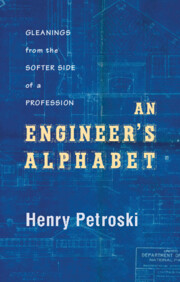B
Published online by Cambridge University Press: 25 October 2011
Summary
back of the envelope. This phrase refers to the practice of making a rough sketch of a design or making a very preliminary calculation for the purpose of recording an idea, demonstrating the practicality of a scheme, estimating the magnitude of a phenomenon, or communicating the essence of a concept to a colleague or potential client. A “back-of-the-envelope” sketch or calculation is often the result of an idea or question that arises away from a desk or regular workspace, and so whatever is handy is used as the recording medium.
The phrase evidently dates from times when there were few telephones, let alone laptop computers and e-mail, and when hotels did not conveniently put little pads of notepaper on the table beside the bed. A supply of paper was not taken for granted, as the evidence of so many reused diary pages and other palimpsests attests. Indeed, it has even been said that Abraham Lincoln's ”Gettysburg Address” was written on the back of an envelope as he rode the train from Washington to the Pennsylvania battlefield. Other versions have it that Lincoln wrote the speech in pencil on a brown paper bag, metaphorically still the “back of an envelope.” Recall that the speech was only 272 words long.
The back of an envelope was almost always blank and, except for the slight ridges associated with the construction of the envelope, provided a clean and unimpeded surface on which to draw, write, or calculate.
- Type
- Chapter
- Information
- An Engineer's AlphabetGleanings from the Softer Side of a Profession, pp. 17 - 42Publisher: Cambridge University PressPrint publication year: 2011



